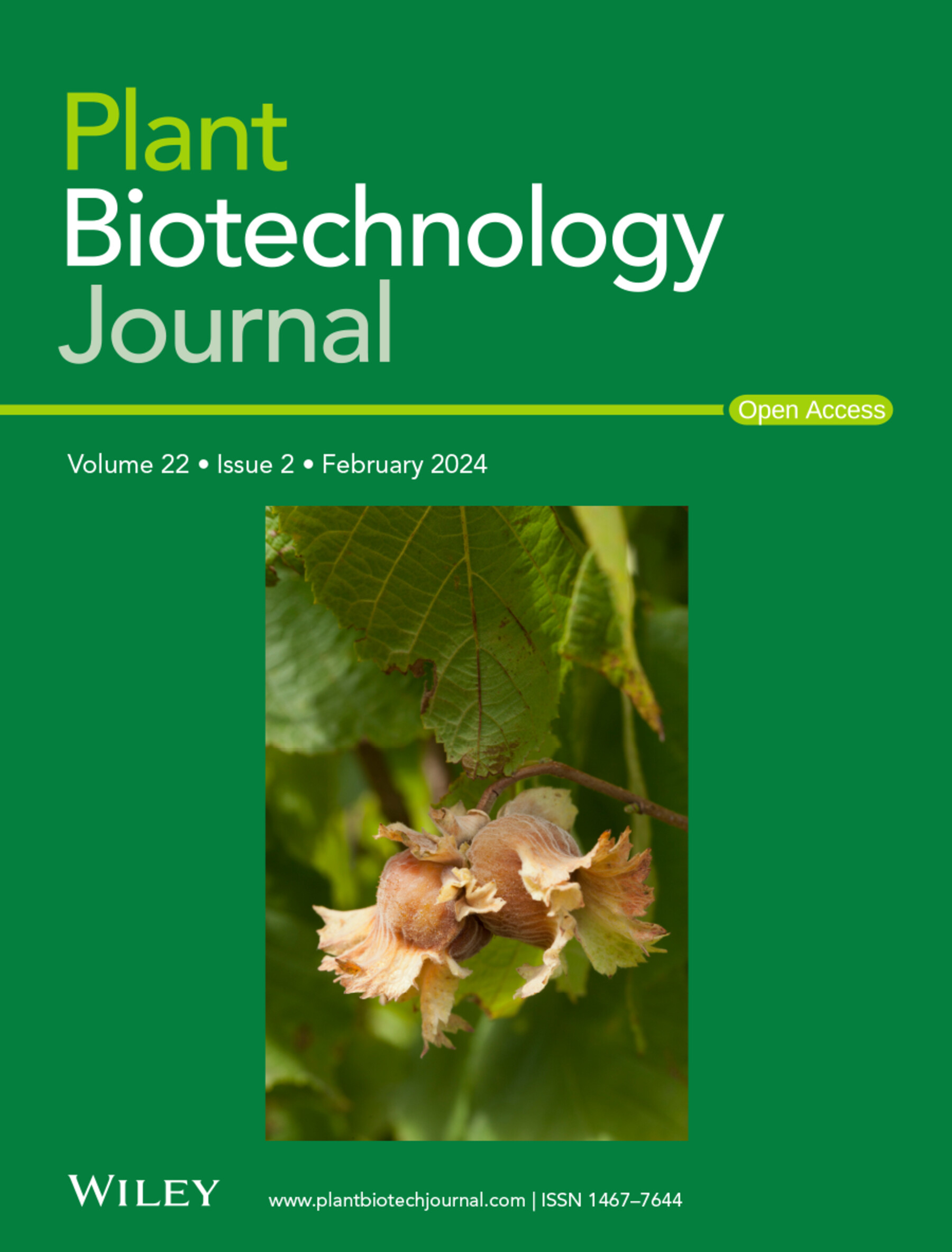A cross-scale transfer learning framework: prediction of SOD activity from leaf microstructure to macroscopic hyperspectral imaging
IF 10.1
1区 生物学
Q1 BIOTECHNOLOGY & APPLIED MICROBIOLOGY
引用次数: 0
Abstract
Superoxide dismutase (SOD) plays an important role to respond in the defence against damage when tomato leaves are under different types of adversity stresses. This work employed microhyperspectral imaging (MHSI) and visible near-infrared (Vis–NIR) hyperspectral imaging (HSI) technologies to predict tomato leaf SOD activity. The macroscopic model of SOD activity in tomato leaves was constructed using the convolutional neural network in conjunction with the long and short-term temporal memory (CNN-LSTM) technique. Using heterogeneous two-dimensional correlation spectra (H2D-COS), the sensitive macroscopic and microscopic absorption peaks connected to tomato leaves' SOD activity were made clear. The combination of CNN-LSTM algorithm and H2D-COS analysis was used to research transfer learning between microscopic and macroscopic models based on sensitive wavelengths. The results demonstrated that the CNN-LSTM model, which was based on the FD preprocessed spectra, had the best performance for the microscopic model, with RC and RP reaching 0.9311 and 0.9075, and RMSEC and RMSEP reaching 0.0109 U/mg and 0.0127 U/mg respectively. There were 10 macroscopic and 10 microscopic significant sensitivity peaks found. The transfer learning was carried out using sensitive wavelengths, and the model performed well with an RP value of 0.7549 and an RMSEP of 0.0725 U/mg. The combined CNN algorithm and H2D-COS analysis demonstrated the viability of transfer learning across microscopic and macroscopic models for quantitative tomato leaf SOD prediction.跨尺度迁移学习框架:从叶片微观结构到宏观高光谱成像的SOD活性预测
超氧化物歧化酶(SOD)对番茄叶片在不同类型逆境胁迫下的抗损伤反应起重要作用。本研究采用显微高光谱成像(MHSI)和可见近红外(Vis-NIR)高光谱成像(HSI)技术预测番茄叶片SOD活性。采用卷积神经网络结合长短期记忆(CNN-LSTM)技术,构建了番茄叶片SOD活性的宏观模型。利用非均相二维相关光谱(hdd - cos),明确了与番茄叶片SOD活性相关的宏观和微观敏感吸收峰。结合CNN-LSTM算法和hdd - cos分析,研究了基于敏感波长的微观模型与宏观模型之间的迁移学习。结果表明,基于FD预处理光谱的CNN-LSTM模型在微观模型中表现最佳,RC和RP分别达到0.9311和0.9075,RMSEC和RMSEP分别达到0.0109 U/mg和0.0127 U/mg。共发现10个宏观和10个微观显著敏感性峰。利用敏感波长进行迁移学习,模型的RP值为0.7549,RMSEP值为0.0725 U/mg。结合CNN算法和H2D-COS分析,证明了迁移学习跨微观和宏观模型用于番茄叶片SOD定量预测的可行性。
本文章由计算机程序翻译,如有差异,请以英文原文为准。
求助全文
约1分钟内获得全文
求助全文
来源期刊

Plant Biotechnology Journal
生物-生物工程与应用微生物
CiteScore
20.50
自引率
2.90%
发文量
201
审稿时长
1 months
期刊介绍:
Plant Biotechnology Journal aspires to publish original research and insightful reviews of high impact, authored by prominent researchers in applied plant science. The journal places a special emphasis on molecular plant sciences and their practical applications through plant biotechnology. Our goal is to establish a platform for showcasing significant advances in the field, encompassing curiosity-driven studies with potential applications, strategic research in plant biotechnology, scientific analysis of crucial issues for the beneficial utilization of plant sciences, and assessments of the performance of plant biotechnology products in practical applications.
 求助内容:
求助内容: 应助结果提醒方式:
应助结果提醒方式:


